Childhood is Finite, but Homeschoolers Get More of It
Wondering how much extra family time homeschoolers get? This post shares four graphs about homeschooling to help you visualize the difference in family time between public schoolers, homeschoolers, and even hybrid schoolers!
Many, many homeschoolers will tell you that one of the biggest perks of homeschooling is TIME. Our kids have more time to play, more time to explore their own interests, and of course, we get more time with them. In a culture that seems to be rushing ever faster towards MORE and EARLIER and QUICKER, it feels like an increasingly valuable gift each year to be able to take a step back, slow down, and let our kids just be kids.
It’s a beautiful privilege to be able to give our children the hours and hours of free play they need for a healthy childhood. However, the flip side of this coin – the coin that sees and honors the value of our child’s time – is the painful awareness that our time with these precious souls is limited. If we do it right, we are slowly but surely working ourselves out of a job, and there will come a time when they are not living with us, not sharing every moment of their day with us, and – as difficult as it is to imagine – not even asking us where they left their shoes.
As I’ve written before, each day together is a gift! Andrew Peterson (of Wingfeather Saga fame) even pointed out in a recent podcast that someday we will close the book on our last family read aloud, and that era too will come to an end. I may or may not have started weeping when I heard that. We’re in an interesting middle ground right now where we still have many years left with children in our home, and yet at the same time I begin to catch a glimpse of the end – still far in the distance but speeding nearer at an alarming rate.
As I thought about the time we spend with our children, I started to wonder exactly what sort of a difference homeschooling makes – and so I decided to find out. The result is these four very simple graphs about homeschooling that help to visualize the extra time this lifestyle gives us. Two of them focus on extra hours with our children and the other two focus on the number of family mealtimes together.
Disclaimer: I am not a scientist. I have calculated the numbers for these simple charts because I was curious about it and wanted a visual to show it, but it’s possible I have made a mistake and you are more than welcome to double check my math or dispute the results.

4 Graphs About Homeschooling and Family Time
Explanation of Graph #1 (below)
This is an estimate based on a simplification which assumes the same amount of sleep for all children and no activities outside the home. Perhaps you could look at it as the maximum number of hours possible if nothing else interfered. For both graphs below I have assumed that parents are with their children continuously apart from school (i.e. no extra-curricular activities or childcare programs), or, in the case of homeschooled children, that the parents are with them all day long every day (i.e. no co-ops or outside classes).
Clearly this is not true for most families, and there could be a lot of variation based on how many other activities a child may be participating in. I am also assuming that all families spend the entire weekend together – again, not realistic but merely a baseline for this simplified chart. The “in a day” column refers to a typical school day, not the weekend, though the weekly columns include the weekend hours. The “in a week” column is referring to a school week, not the summer.
When I refer to hybrid schools I am talking about those in which the child attends school three days a week and is educated at home for the other two.
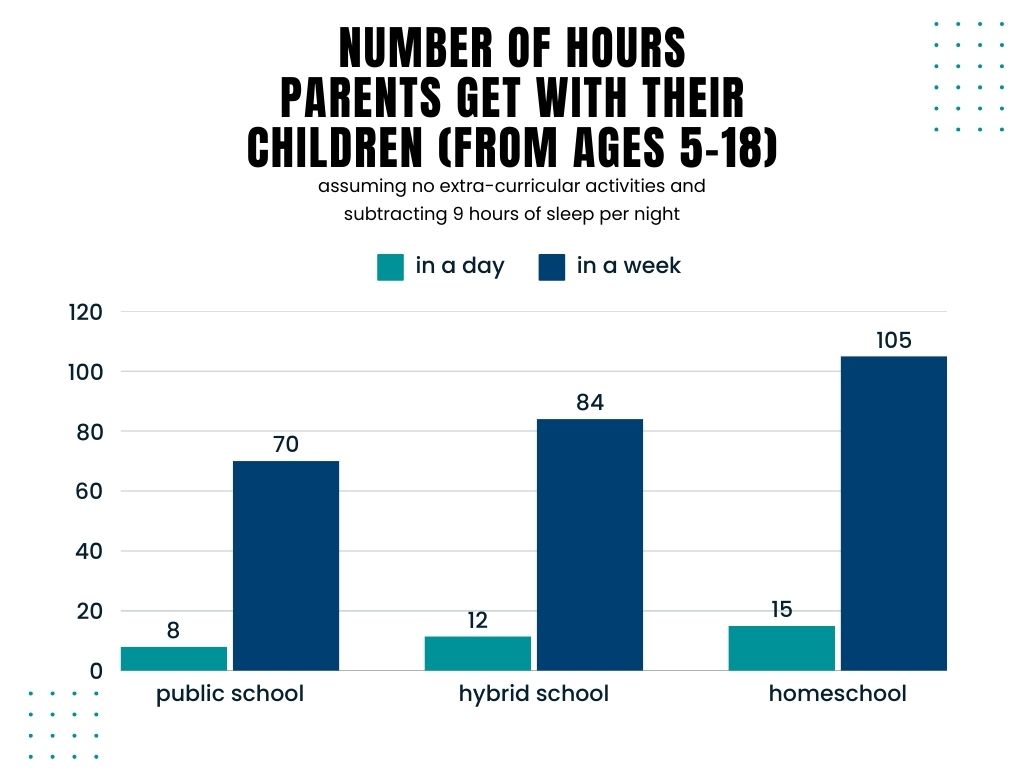
Results From Graph #1
Homeschoolers have an average of 35 extra hours per week with their children during the school year compared with those at public school, and even hybrid schoolers gain an extra 14 hours per week with their children.
Explanation of Graph #2 (below)
As above, we are assuming parents to be continuously with their children outside of school, which of course will become even less true for all schooling choices as the children reach high school. So once again, you could look at this as the maximum number of hours possible – not as an exact count of how it would play out in real life.
This chart accounts for 36 school weeks in a year, and a 7 hour school day – assuming that during the summer weeks, all forms of schooling would have the same number of hours with their children.
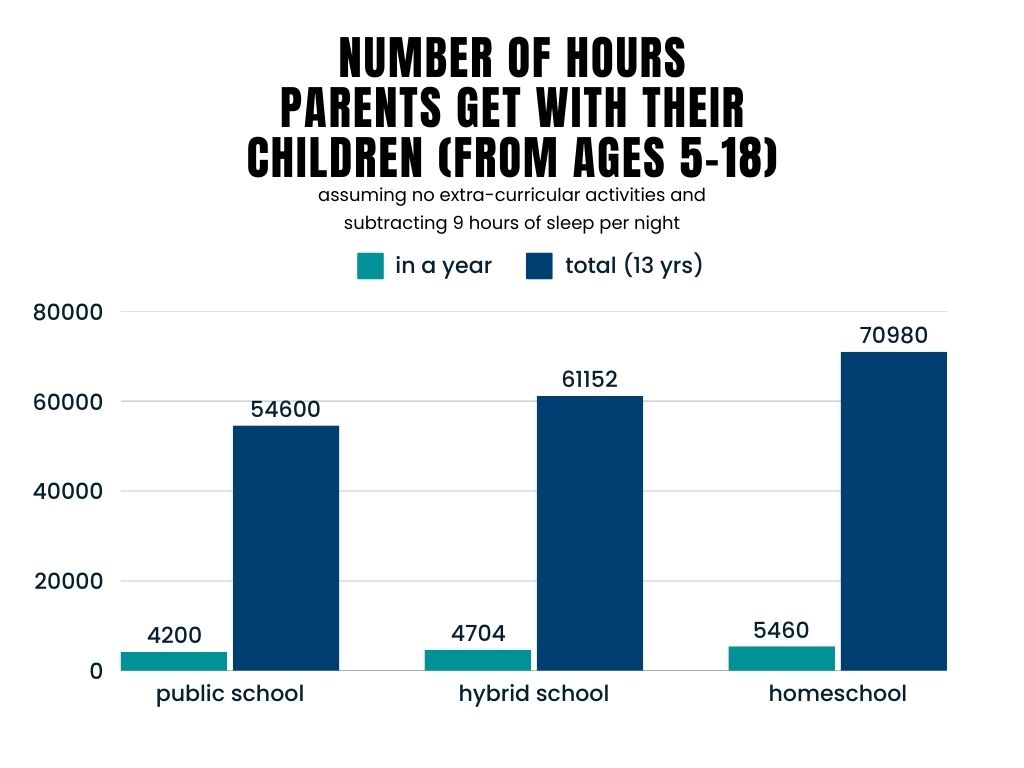
Results from Graph #2
In one year, homeschooling families gain about 1,260 extra hours with their children. Over the course of an entire childhood, homeschooling families gain about 16,380 hours with their children compared to public schoolers. There could be an even greater difference here if the public schoolers are highly involved in extra-curriculars and the homeschoolers are not.
Explanation of Graph #3 (below)
Graphs #3 and #4 explore an indirect effect of homeschooling that is not often discussed: eating more meals together as a family. There have been numerous studies over the past years touting the massive benefits to children from simply eating dinner with their family (here’s one from Harvard posted in 2020), and as I was thinking about this, I realized that one of the benefits of homeschooling is that we often are eating two – if not three – meals together each day!
The first of these two graphs about homeschooling and family meals simply compares the increase that comes over the course of a year from eating two meals together instead of just one.
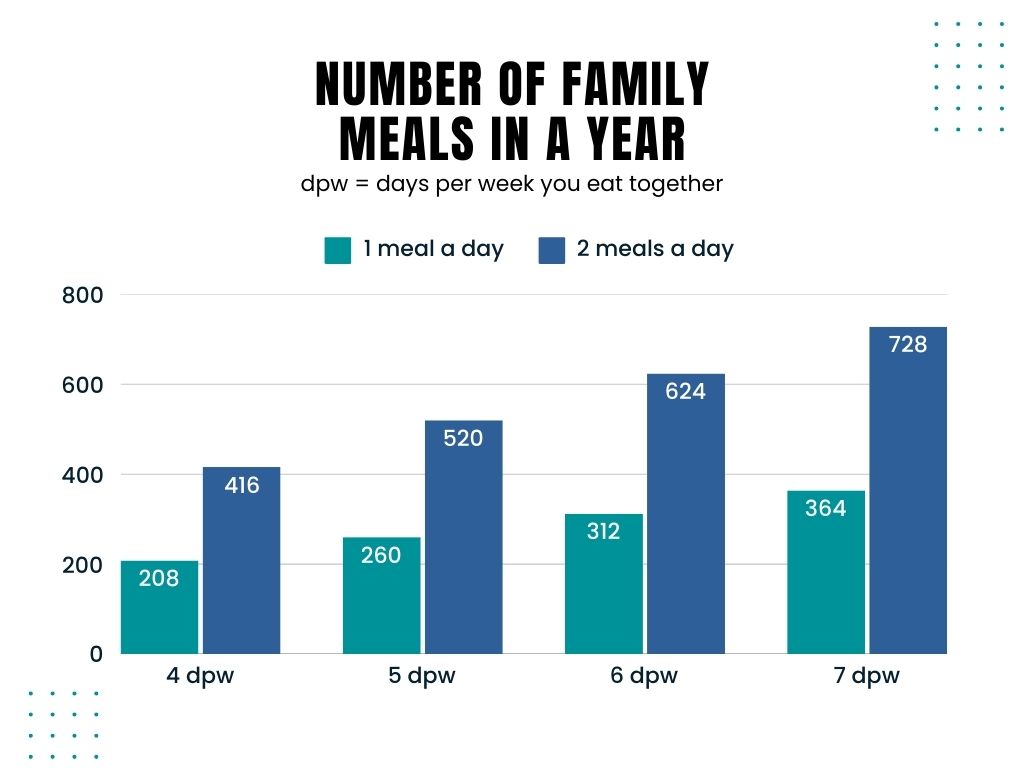
Results from Graph #3
Homeschoolers gain a minimum of 208 to 364 meals together as a family per year, depending on how many days they are able to eat together. This number could significantly increase if you eat three meals a day together.
Explanation of Graph #4 (below)
Here I am counting the number of family meals you will have over the course of sixteen years (assuming that the first year of your child’s life and their last year in the home may both be tough times to get them to the table). Again, this is necessarily a very simplistic view of family life, and your real life will almost certainly include much more variation than could ever be captured in a graph.
Furthermore, this graph does not account for preschool age children who may be eating more meals at home before they head to school full-time – unless both parents are working and they are in a daycare of some sort.
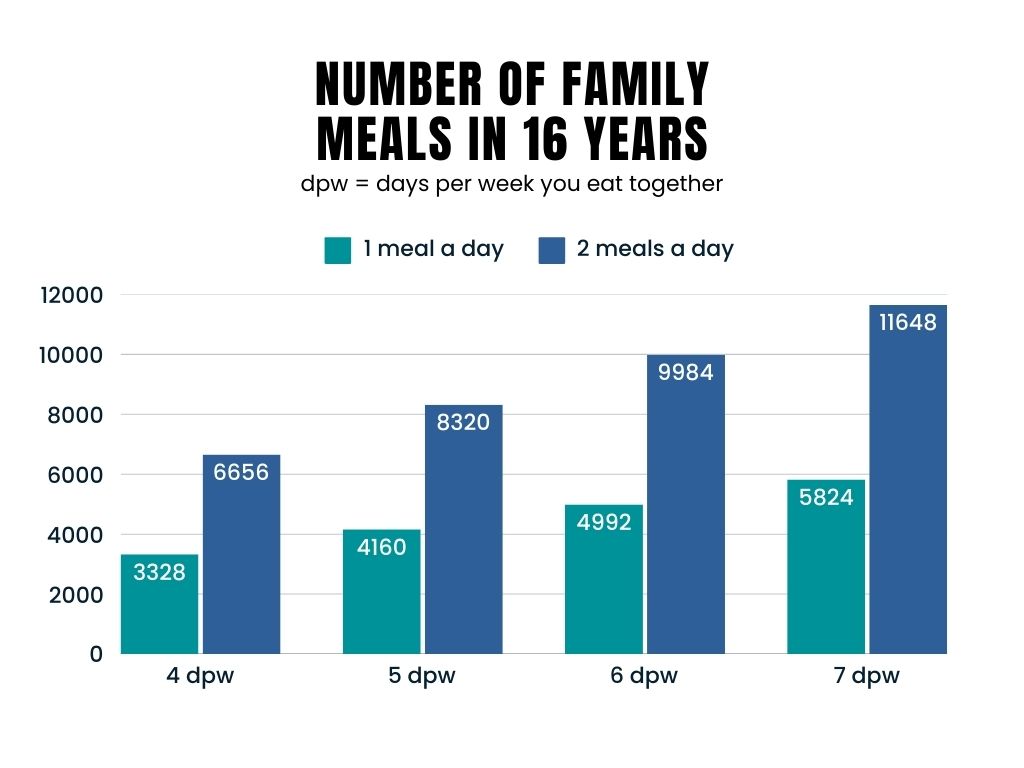
Results from Graph #4
Families who are able to eat two meals per day together gain between 3,328 to 5,824 meals with their children throughout the course of a childhood. This number could increase even more for homeschoolers who are eating three meals a day together.
Conclusion
Opinions may vary, but I choose to see these extra 5,000 meals and 16,000 hours together not as a burden but as a great gift. How can it be otherwise when we know that our days with them are numbered? Each morning our children are just a nudge taller than yesterday, just the smallest, imperceptible bit more independent, more mature and more thoughtful – one tiny shuffle closer to the person God meant them to be.
It’s beautiful and it’s painful. I try to remember and I try to cherish, but some days I’m too tired. Will I forget the way he runs across the kitchen and hugs my leg while I’m cooking? Will I remember the days when she smiled at me with her sparkling brown eyes and told me that I was her best friend? Will we remember how it felt to be surrounded by small sweaty bodies on the couch, all pressed in close to see the pictures in the book?
I don’t know, but I’ll take all the extra time I can get.
“Watching one’s small humans age and grow up packs a serious punch. It’s like being stuck in a dream unable to speak, like being a ghost that can see but not touch, like standing on a huge grate while a storm rains oiled diamonds, like collecting feathers in a storm. Parents in love with their kids are all amnesiacs, trying to remember, trying to cherish moments, ghosts trying to hold the world.” ~ from Death By Living by N. D. Wilson



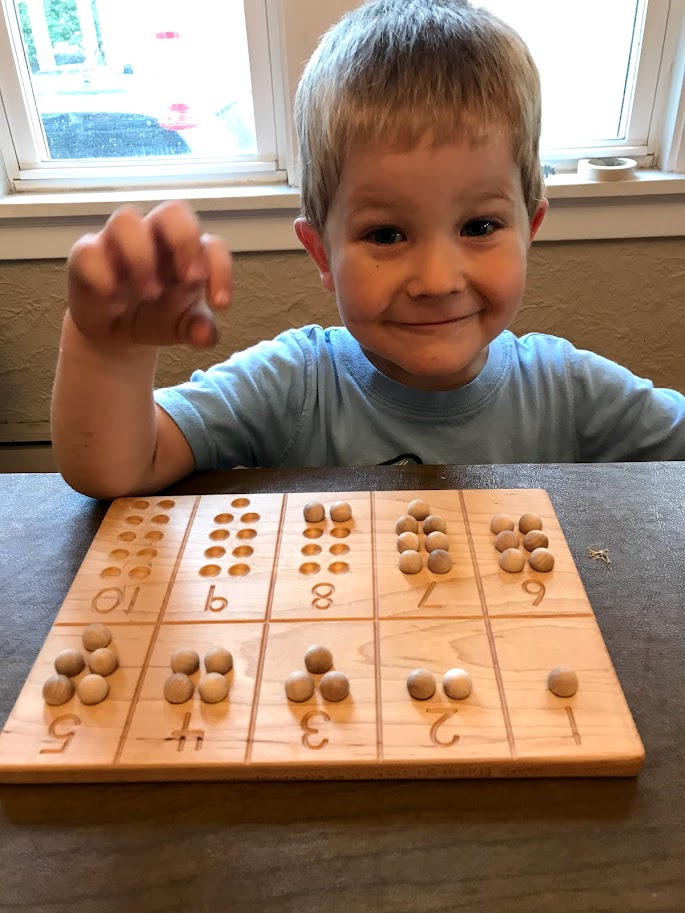
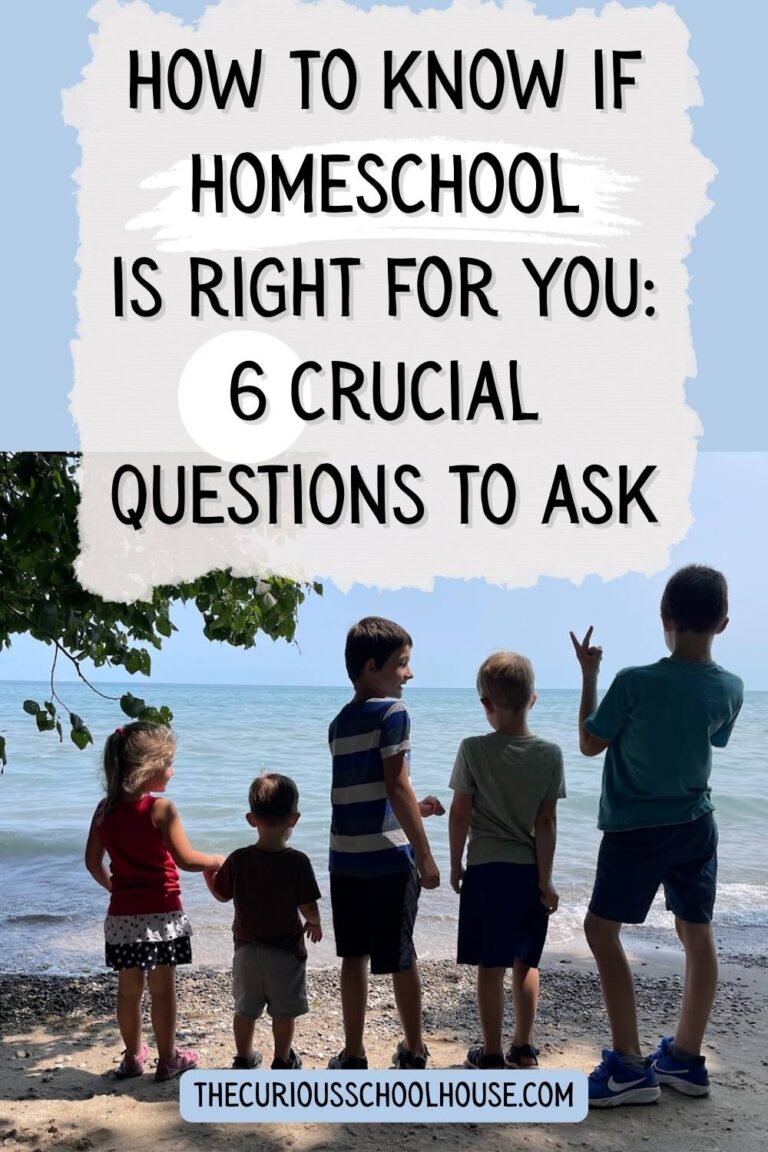
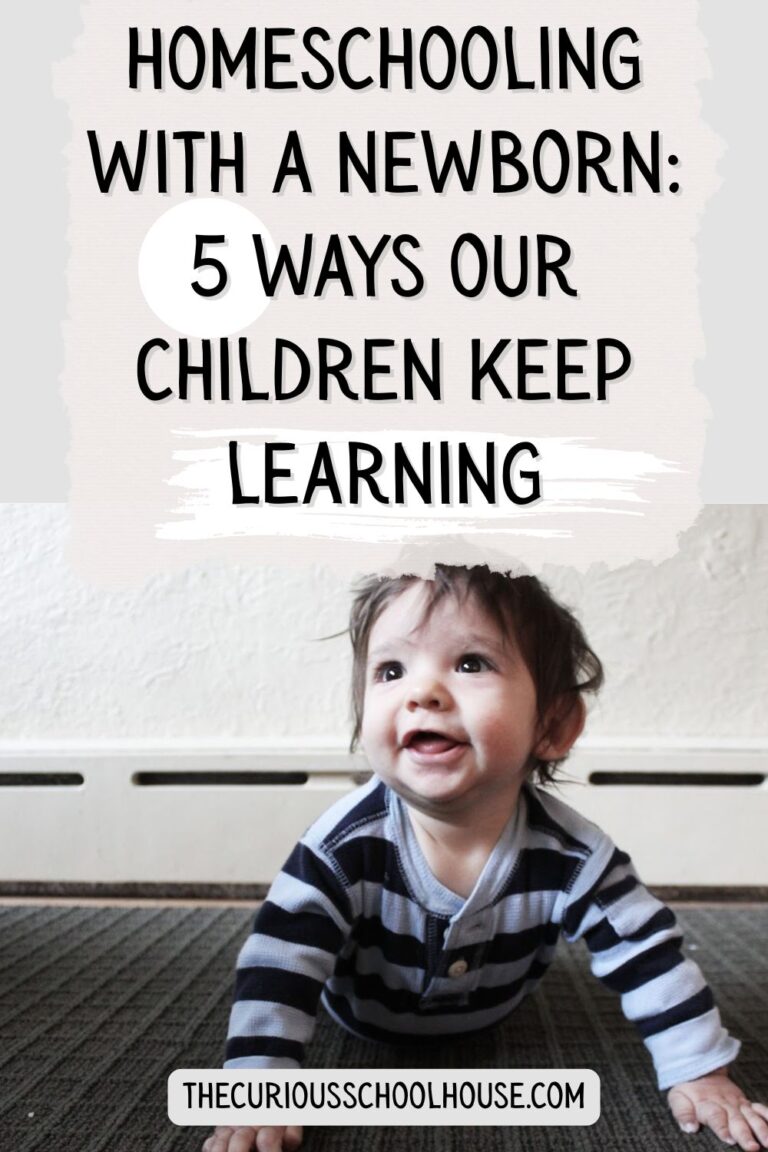


I really miss our homeschools days…. And yet so thankful they are behind us. I have to be truthful when I talk to new moms. It is the greatest thing you can do for your children but some days… it will be hard. But it is still a blessing.
I love your graphs. You can’t argue once you see the numbers. Great post!!
Not me over here holding back tears. Time with family is so precious! I am glad I get to be apart of my children’s life.
Interesting graphs. I consider mealtimes (some of them, anyway!) to be an unofficial part of our school plan. This was kind of true when our kids were in public school, too, just more so in the past 9 years of homeschooling. Mealtimes are a good time to include Dad in the learning and life conversation, whether directly related to something from “school” or totally separate. With one away in college now, and two graduating this year, I am glad for all the time we had with them! And for the time they had to play, explore, delve into extra things, be outside, spend time with each other, and, in the teen years, sleep– things that would not have happened that way if we had kept them in school.
good point! So good for Dad to be included too 🙂
I always love a good visual representation of ideas. Yes, time is a gift, and may I never take it for granted. Thanks for sharing!
Very informative and sobering! It’s easy to be swept along by the urgent, and no reflect on this reality. Andrew Peterson is a favorite author in our house, and I hope our read aloud times will continue indefinitely!
yes me too! At least we can hopefully start reading to grandchildren once ours are all grown 🙂
We loved homeschooling and the extra time we had with our boys! Kids grow so fast and it’s time we can’t get back! Great post!😁
I love this! Thanks for the great info
I love this!! Thank you for doing the research!
I’m so happy that we are choosing to homeschool our children for so many reasons, but these graphs are such encouraging visual!